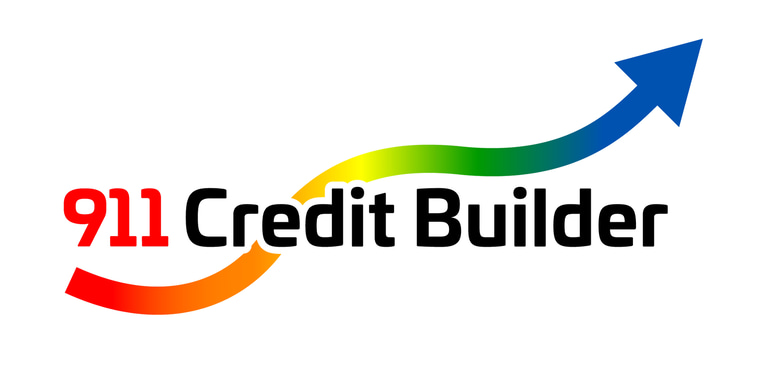Revolving Credit Card 25% of Credit Limit Tracking Sheet Example Below which will boost scores fast!


Comprehensive Guide to Creating a Revolving Credit Tracking Sheet
Fastest way to boost scores! Tracking your credit card payments and balances is a powerful step toward financial freedom. This simple yet effective tool helps you stay organized by keeping all essential details—payment dates, credit limits, balances, and goals—at your fingertips. With clarity and focus, you can take control of your finances, pay down debt faster, and work toward achieving your financial dreams. Empower yourself today with this practical guide to managing your revolving credit with ease and confidence!
Laura Summers Davis
12/1/20249 min read
Instructions for Use:
Revolving Credit Card: List the name or issuer of each card.
Payment Due Date: Enter the due date for each card's payment.
Account Update Date (Bureaus): Record when the card's information updates with the credit bureaus.
Credit Limit: Write the total available credit for the card.
Balance Owed: Note the current balance owed on the card.
Payment Amount Due: Specify the minimum payment required by the due date.
Goal: Enter your personal repayment target or financial objective for the card.
Introduction to Revolving Credit Tracking
Revolving credit is a form of credit that allows individuals to borrow funds up to a defined credit limit. This credit structure is commonly associated with credit cards, which enable consumers to make purchases, repay partially, and then borrow again. Understanding revolving credit is vital for personal finance management, as it affects not only immediate financial flexibility but also long-term credit scores. Tracking payments and balances in revolving credit accounts is essential to maintain a healthy credit rating.
Credit cards operate on the principle of borrowing against a set limit, with users expected to make regular payments. Each month, the cardholder receives a statement detailing their outstanding balance and minimum required payment. The flexibility of revolving credit is beneficial; however, it also comes with potential pitfalls, such as accumulating debt if payments are not managed carefully. Since credit utilization ratio — the amount of credit used relative to the total available credit — considerably influences credit scores, careful monitoring of expenditures and repayments is crucial.
The purpose of a revolving credit tracking sheet is to help individuals effectively monitor their spending, payments, and overall credit utilization. By accurately recording transactions, it enables users to stay on top of their credit card balances and payment due dates, which purportedly mitigates the risk of late payments and accruing interest. Furthermore, a well-organized tracking sheet promotes informed financial decisions, allowing individuals to understand their borrowing habits and make adjustments as necessary.
Ultimately, adopting a revolving credit tracking sheet equips individuals with powerful tools for establishing and maintaining financial health, resulting in better credit management and improved overall financial confidence.
Understanding Key Components of the Tracking Sheet
A revolving credit tracking sheet is an essential financial tool that aids individuals in managing their credit effectively. It involves several crucial components that enable users to monitor their revolving credit, identify trends, and make informed financial decisions. The primary columns to include are 'Revolving Credit Card', 'Payment Due Date', 'Account Update Date (Bureaus)', 'Credit Limit', 'Balance Owed', 'Payment Amount Due', and 'Goals'. Each element plays a vital role in the comprehensive analysis of one’s credit situation.
The 'Revolving Credit Card' column is where users list each card they hold, allowing for a streamlined view of their credit accounts. This section will help differentiate between different accounts, thereby simplifying management. Following this is the 'Payment Due Date', which indicates when payments are required. Keeping track of these dates is essential to avoid late fees and potential penalties that could impact credit scores negatively.
The 'Account Update Date (Bureaus)' column tracks when the credit bureaus received updates regarding the account status. Regularly updating this information helps users stay informed about their credit report changes and assists in verifying the accuracy of reported data. Next, the 'Credit Limit' field details the maximum amount that can be borrowed on each card, providing a fundamental insight into available credit resources.
The 'Balance Owed' column represents the current outstanding balance for each credit account. Monitoring this figure is crucial for understanding total debt levels. The 'Payment Amount Due' helps users plan their finances by indicating how much they must pay each month to maintain good standing. Lastly, the 'Goals' section allows users to set personal financial objectives, such as reducing debt levels or increasing credit scores, fostering a proactive approach to credit management.
Step-by-Step Guide to Setting Up Your Tracking Sheet
Creating a revolving credit tracking sheet is an essential step for managing your credit usage effectively. This guide will help you set up the tracking sheet using commonly available spreadsheet applications like Excel or Google Sheets. Begin by opening a new spreadsheet document, where you will create a structured and user-friendly layout that facilitates easy monitoring of your credit accounts.
The first step involves formatting your sheet. Use bold headings for the top row to clearly delineate different categories of information you will be recording. Recommended columns include: 'Date', 'Transaction Description', 'Amount Charged', 'Payment Made', 'Current Balance', and 'Credit Limit'. These columns provide a comprehensive overview of your credit activities. After creating the headers, consider adjusting the width of the columns to ensure that the text fits well and remains readable.
Next, input your first entry under these headers. Consistency is key, so make sure to follow the same format for each new entry. For instance, when documenting a credit transaction, include the date of the transaction, what it was for, and the amount charged. Similarly, when you make a payment, record the payment details in the corresponding row to maintain an accurate reflection of your current balance. To further enhance readability, you can color code each row or use alternating row colors, which can make tracking the information easier at a glance.
To streamline updates to your revolving credit tracking sheet, consider utilizing formulas for the 'Current Balance' column. For example, you can use a simple formula to subtract payments from the charged amounts automatically. This will keep your tracking sheet dynamic and up-to-date with minimal effort. Regularly review and update the sheet to ensure it reflects your latest credit activity accurately.
Tips for Effectively Using the Tracking Sheet
To maximize the benefits of a revolving credit tracking sheet, regular updates are paramount. Consistency in recording transactions, payments, and balances will provide a clear and accurate picture of your credit usage over time. Consider setting aside a specific day each week or month to update your tracking sheet. This dedicated time allows you to stay on top of credit card balances, avoiding any potential oversights that could lead to increased debt or missed payments.
Establishing reminders for due dates is another effective strategy. Utilize digital calendars or task management apps to receive notifications in advance of payment deadlines. By staying proactive about your due dates, you can prevent late payments that could negatively impact your credit score. This approach also ensures that you are making timely payments, which is crucial for maintaining a healthy credit profile.
In addition to tracking balances, develop a plan for paying down credit card debts. Assess your current financial situation and prioritize which debts to tackle first, typically focusing on those with the highest interest rates. Once you identify your strategy, include it in your tracking sheet. This integration emphasizes accountability and reinforces your commitment to reducing financial burdens.
Setting and adjusting financial goals is also an essential aspect of using a tracking sheet. Divide your overarching goal into smaller, achievable milestones that can be easily monitored. As you make progress, revisit and adjust these goals based on your evolving financial situation. For example, when you successfully pay down a credit card balance, set a new target to continue that momentum, whether it’s increasing monthly payments or reducing spending on non-essential items.
Ultimately, the effectiveness of your revolving credit tracking sheet relies on consistency and proactive engagement. By committing to regular updates, timely payments, strategic debt reduction, and adaptive goal-setting, you can achieve greater control over your credit usage, fostering improved financial health.
Analyzing Your Credit Card Payments and Balances
To effectively use a revolving credit tracking sheet, one must engage in a thorough analysis of credit card payments and balances. This analysis enables individuals to interpret their payment patterns and identify areas requiring attention. By organizing data clearly, users can observe how payments fluctuate over time, revealing insights into their spending habits and debt management practices.
Firstly, review your payment history to determine whether you are consistently making minimum payments or paying more than the required amount. A pattern of just meeting the minimum requirement may indicate a possible accumulation of debt, which could lead to higher interest charges over time. On the other hand, consistently exceeding the minimum payment may illustrate healthy credit management, contributing positively to credit scores.
Another critical aspect is tracking your credit card balances. Monitoring changes in your balances will allow you to recognize trends in your spending. Look for any months where balances spike significantly, indicating times when you may have overextended your finances. This information can be particularly useful for setting future spending limits and crafting a strategy for reducing overall debt.
Additionally, setting personal goals in your tracking sheet is paramount. Determine specific targets for payment amounts or desired balance levels by specific dates. Regularly assess your progress towards these goals during each analysis phase. Should you find yourself falling short, the tracking sheet provides a platform for adjusting your strategy, whether through increased payments or a reevaluation of your spending habits. Ultimately, understanding the nuances of payment patterns and balances empowers individuals to make informed decisions about their revolving credit usage, ensuring financial stability and fostering responsible credit behavior.
Maintaining Communication with Credit Bureaus
Regular communication with credit bureaus is paramount for keeping one’s credit profile accurate and up-to-date. Creditors are not legally required to report to the credit bureaus; it is entirely voluntary. Each creditor decides whether to report and to which credit bureaus (Experian, Equifax, TransUnion). Some creditors may report to all three, just one, or none at all. Here are some key points about why creditors report: Benefit to Creditors: Reporting can help creditors assess the risk of lending by viewing a borrower's credit history. It also incentivizes borrowers to make payments on time, as their credit scores are impacted. Cost and Resources: Reporting involves costs and administrative work, so smaller creditors or businesses may choose not to report. Fair Credit Reporting Act (FCRA): If creditors do report, they must ensure accuracy under FCRA guidelines to protect consumers.
Should you be working on improving or establishing credit, it’s a good idea to ask creditors if they report to the bureaus before opening an account.Timely reporting provides a snapshot of an individual's credit behavior, which is essential for assessing creditworthiness. Accurate, up-to-date information ensures that potential lenders see a fair representation of an individual's credit standing.
The updates that credit bureaus receive can significantly influence a consumer’s credit score. When individuals make timely payments on their revolving credit accounts, these positive behaviors are reflected in their credit reports, potentially enhancing their credit health. Conversely, missed payments or delayed updates can negatively affect one’s credit rating. Therefore, it is vital to utilize a revolving credit tracking sheet to monitor payment due dates and amounts. This proactive approach not only helps in making timely payments but also ensures that the corresponding updates are accurately communicated to the bureaus.
Monitoring credit reports is another crucial element in maintaining clear communication with credit bureaus. Consumers are entitled to a free credit report annually from each of the three major bureaus: Experian, TransUnion, and Equifax. This practice allows consumers to verify that the information reported aligns with their records, helping to ensure that timeliness and accuracy are maintained. Any discrepancies can be addressed quickly, mitigating any negative impact on the credit score.
In summary, staying organized through a comprehensive revolving credit tracking sheet can promote better communication with credit bureaus. By ensuring that payments are made on time and monitoring credit reports regularly, individuals can positively impact their credit health and experience greater financial stability.


Long-term Benefits of Credit Tracking and Management
The implementation of a revolving credit tracking sheet offers substantial long-term benefits for individuals seeking to improve their financial health. By diligently monitoring and managing credit usage, individuals can develop better financial habits over time. This proactive approach can lead to improved credit scores, which are essential for achieving favorable lending terms in future financial endeavors. A strong credit score is crucial for obtaining lower interest rates on loans, mortgages, and other credit facilities, ultimately saving money in the long run.
Moreover, consistent credit tracking fosters heightened awareness of spending patterns and credit utilization. This awareness enables individuals to make informed decisions regarding their expenses and helps in developing disciplined spending habits. As one becomes more attuned to their financial habits, the likelihood of incurring debt can diminish significantly. A revolving credit tracking sheet empowers users to create a clear roadmap to manage their debt levels effectively, ensuring that they do not exceed their repayment capabilities. By adjusting spending and repayment strategies based on tracked data, users can mitigate the risk of falling into a cycle of credit dependency.
Another significant advantage of utilizing a credit tracking sheet is the enhanced clarity it provides regarding personal finances. By compiling all relevant credit information in one place, users can easily assess their financial status, set achievable financial goals, and create actionable plans to reach them. This transparency reduces financial stress and enables individuals to engage in proactive financial planning, which is fundamental for long-term success. 911 Credit Builder emphasize that the ultimate goal of effective credit management is not only to maintain a good credit score but also to achieve lifelong financial well-being.

